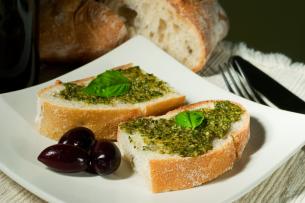Have you tried chutneys for your favorite roast? Sweet or spicy, this condiment is becoming more and more popular, but some people don't know exactly what it is.
| Courgette and Tomato Chutney
This (photo above) is an example of a seasonal glut of fruit and vegetable preserved for the colder months. Pot them up prettily! You'll love some easy to make chutney recipes, at the BBC Good Food.
|
Chutney began in the 1600's
as luxury pickled goods made from fresh fruits and spices originating in India. During the colonial regime,
the British brought the chunky and spiced condiment which was mostly
mango chutney in sticky syrup to Europe, which has spread to its
whole empire reaching Africa and the Caribbean. In the late 1800's,
chutney has become popular in Europe and North America using local farm
grown ingredients and other unripe fruits as
substitute to mango, until stored chutneys became a favorite condiment for meat
and fish.
| Beginner's Pepper-Peach Chutney by Mother Earth News |
Taste Profile in Chutneys
Taste in chutneys is
derived from the natural interaction of fruit acid and essences coming from the
various ingredients used. The uniqueness of its taste
and flavor depends upon the kind of fruit or vegetable selected for the pairing, and textures that range from smooth to coarse chopped preserves and pickles.
Serving Suggestions
Chutneys make a perfect
accompaniment to foie grass, or fish with rice. May be served cold or warm and can be used to enhance the flavor of mayo-based salads and casseroles. Chutneys are best condiment to roasted meats, great
when drizzled over greens, risotto or polenta, best for marinades or
poured over fresh fruits or ice-creams.
Sweeter chutneys
make an interesting spread on breads and pastries. To suit any
taste, chutneys, cover a dip of oriental
cuisine and Mediterranean touch for a fuller spread of a
spicy gastronomical delight.
How to Store Chutneys
To keep chutney fresh and
safe for a few weeks, store in jars with tight-fitting lids to reduce exposure to air microbes. Refrigerate.
